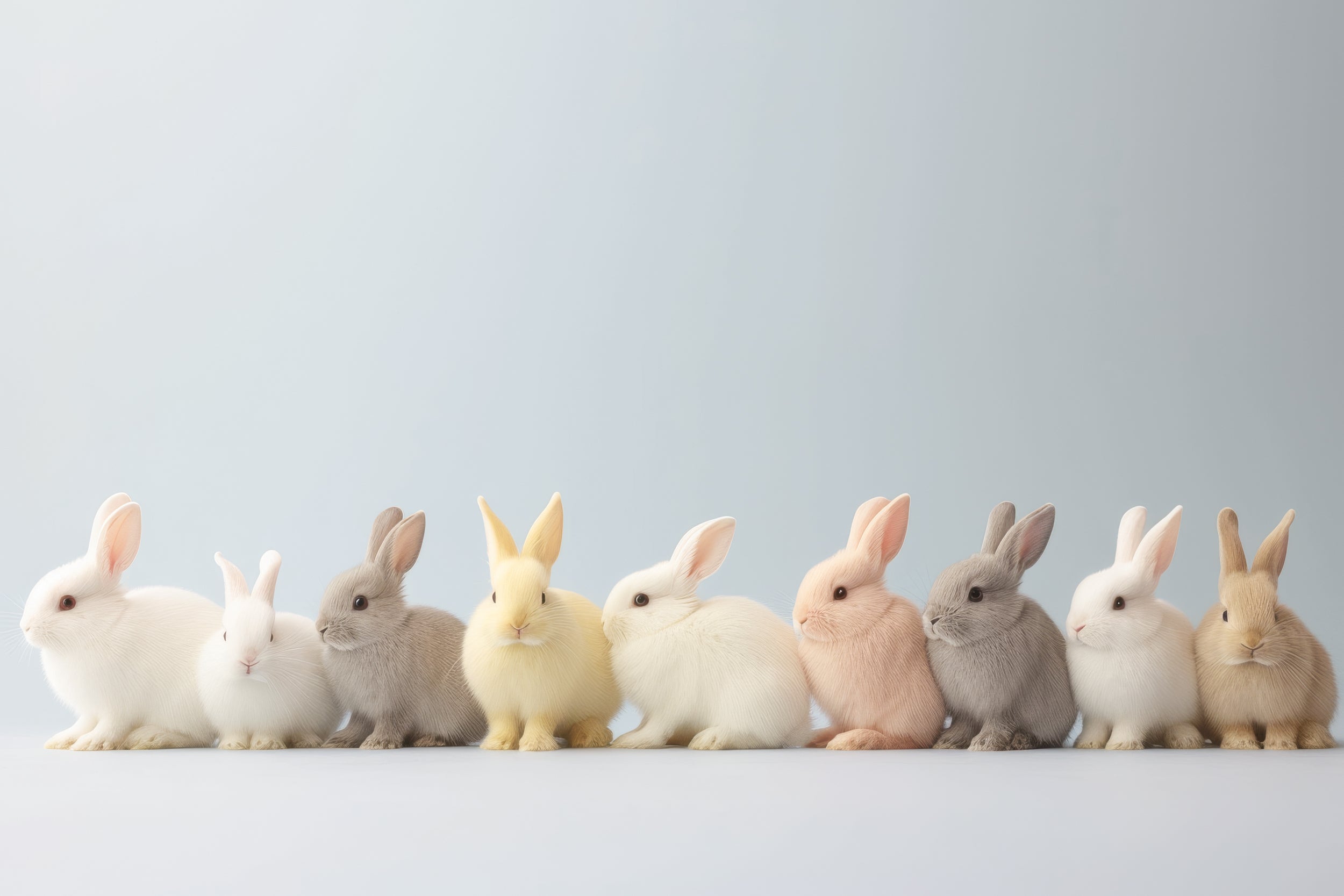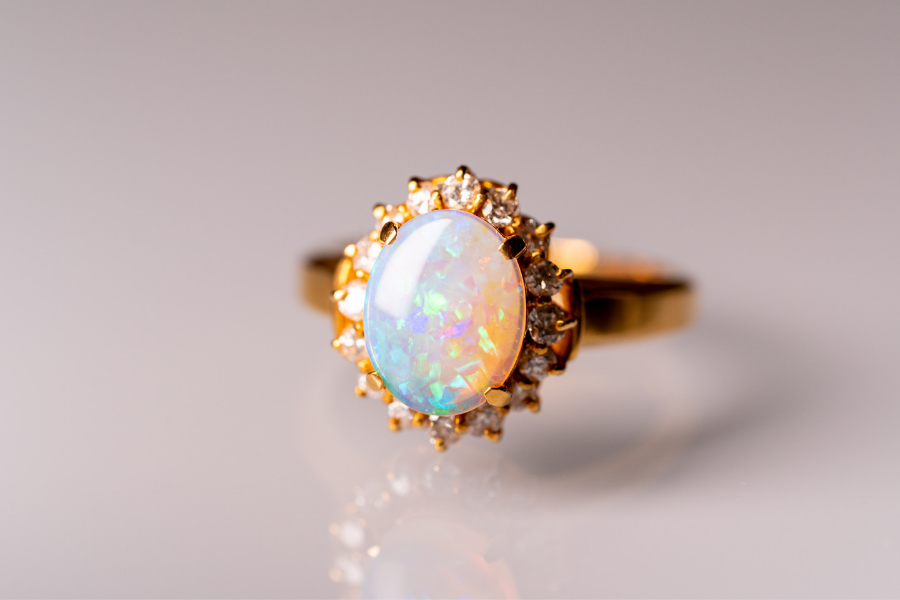
The fascinating world of antique jewellery: A journey through the most important eras
Antique jewelry is more than just a fashion accessory - it tells stories, reflects the art and culture of times gone by and fascinates with its craftsmanship. In this blog post, we take you on a journey through the most important eras of antique jewelry. Discover what made these times so special, which materials and designs were typical and how you can recognize the different eras based on pieces of jewelry.
Baroque (ca. 1600-1750): Magnificent opulence
The Baroque period was a time of abundance and splendor. This era, characterized by monarchical splendor and ecclesiastical power, produced magnificent pieces of jewelry that testified to wealth and status. Typical of the Baroque period are large brooches, elaborate necklaces and magnificent earrings made with pearls, colorful gemstones and lots of gold. The jewelry of this period is rich in detail and artfully designed, often inspired by religious and mythological motifs.
Features:
- Materials: gold, pearls, colorful gemstones
- Designs: Elaborate, ornate shapes, often religious or mythological motifs
- Techniques: Artistic handwork, detailed engravings and settings
Rococo (ca. 1730-1780): Playful lightness
In contrast to the heavy and ostentatious Baroque, the Rococo represents playfulness and lightness. This era is characterized by delicate, asymmetrical designs and floral motifs. Jewelry from the Rococo period is often delicate and elegant, with curved lines and fine details. Delicate pendants, bracelets and brooches are typical of this era and reflect the lightness and joie de vivre that characterized this time.
Features:
- Materials: gold, silver, colorful gemstones, pearls
- Designs: Floral motifs, asymmetrical and playful shapes
- Techniques: Filigree work, fine engravings and filigree settings
Georgian (ca. 1714-1837): Romantic craftsmanship
The Georgian era, named after Kings George I to IV, is known for its romantic and symbolic jewelry. During this period, handcrafted pieces with romantic motifs such as hearts, snakes and flowers were often made. So-called "sentimental jewelry" was particularly popular, such as lockets with hair keepsakes or engraved vows of love. These pieces of jewelry are valued not only for their craftsmanship, but also for their emotional significance.
Features:
- Materials: gold, silver, diamonds, colorful gemstones
- Designs: Romantic motifs such as hearts and snakes, Sentimental Jewelry
- Techniques: handwork, closed frames, engravings
Victorian (ca. 1837-1901): Diversity and Symbolism
The Victorian era, which spans the long reign of Queen Victoria, is particularly diverse and is divided into three phases: the early, middle and late Victorian periods. At the beginning of this era, romantic jewelry with floral patterns and delicate details dominated. Over time, the designs became darker and more dramatic, often inspired by the mourning for the late Prince Consort Albert. Cameo brooches, wedding rings with hidden symbols and jewelry with colorful gemstones are typical representatives of this era.
Features:
- Materials: gold, silver, pearls, colorful gemstones, enamel
- Designs: Floral motifs, cameos, hidden symbolism, darker tones in later phases
- Techniques: engravings, enamel work, filigree details
,
Edwardian (ca. 1901-1910): Delicate elegance
The Edwardian era, named after King Edward VII, stands for delicate elegance and refined craftsmanship. Jewelry from this period is characterized by delicate designs and fine materials. Platinum was used extensively for the first time, often combined with diamonds and pearls to create an airy, almost floating aesthetic. Necklaces and rings with delicate patterns and delicate decorations are typical, emphasizing the lightness and elegance of this era.
Features:
- Materials: platinum, diamonds, pearls
- Designs: Filigree patterns, delicate and airy designs
- Techniques: craftsmanship, fine engravings, platinum work
Art Nouveau (ca. 1890-1910): Organic forms and natural motifs
Art Nouveau, also known internationally as Art Nouveau, is an era that is strongly inspired by nature. Organic, flowing shapes, floral motifs and curved lines characterize the jewelry of this period. Enamel work is also typical of Art Nouveau, often combined with gemstones that reflect natural colors. Jewelry from this period are artistic masterpieces that emphasize the beauty of nature and man's connection with his environment.
Features:
- Materials: gold, enamel, gemstones
- Designs: natural motifs, flowing and organic shapes, curved lines
- Techniques: enamel work, filigree settings, handcrafted details
Art Deco (ca. 1920-1935): Geometric shapes and luxurious materials
The Art Deco era stands for glamour, modernity and luxurious materials. Geometric shapes, clear lines and strong symmetry are characteristic of this period. Jewelry from this era was often made of platinum and decorated with diamonds and colored gemstones. Art Deco jewelry exudes a certain extravagance and elegance that fits perfectly with the exciting twenties.
Features:
- Materials: platinum, diamonds, colored gemstones
- Designs: Geometric patterns, clean lines, luxurious materials
- Techniques: precision work, symmetrical designs, elaborate settings
How to identify eras by looking at jewelry
Each era has its own distinctive features, which are reflected in the materials, designs and techniques used. Here is a brief overview of how you can recognize the different eras:
Baroque: Magnificent, detailed designs with lots of gold and colorful gemstones.
Rococo: Playful, asymmetrical shapes with floral motifs.
Georgian: Romantic and symbolic motifs, often in closed settings.
Victorian: Variety of romantic to dramatic designs, often with hidden symbolism.
Edwardian: Delicate, filigree designs, often made in platinum.
Art Nouveau: Organic, flowing shapes, often with enamel and natural motifs.
Art Deco: Geometric, clean lines and luxurious materials such as platinum and diamonds.
Conclusion: The timeless beauty of antique jewelry
Antique jewelry is not only a fascinating area of collecting, but also a wonderful way to preserve and wear the history and culture of times gone by. Each piece of jewelry tells its own story and brings a piece of the past into our present.
If you are looking for a special piece of jewelry or simply want to learn more about the world of antique jewelry, I am always happy to help.


